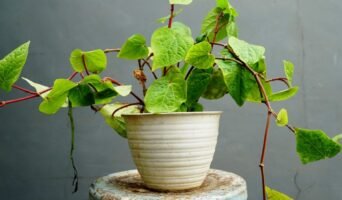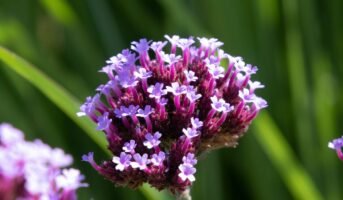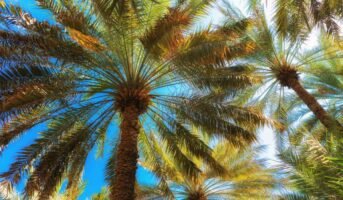Gomphrena globosa is a plant native to Central and South America, and it’s used in traditional medicine to treat a variety of conditions, including diabetes, high blood pressure, and epilepsy.
The main active ingredient in gomphrena globosa is gomphrenone. This substance has been shown to have anticonvulsant properties and can help reduce seizures in people with epilepsy. In addition to its anticonvulsant effects, gomphrenone has also been shown to have other benefits when used for the treatment of diabetes.
Gomphrena globosa: Quick facts
| Botanical Name | Gomphrena globosa |
|---|---|
| Common Name | Globe Amaranth, Bachelor’s Button, Thousand Day Red |
| Genus | Gomphrena |
| Family | Amaranthaceae |
| Life Cycle | Annual |
| Mature Size | 1-3 inch long |
| Cultivation | America |
| Benefits | Ornamental Plant |
Features of Gomphrena globosa

Source: Pinterest
- Gomphrena globosa, commonly known as the Globe Flower, is a perennial herb that grows from bulbs and forms mats or clumps.
- It is also known as Stinking Gumplant, and its scientific name is Gomphrena globosa. Its other variants grow in southern parts of Australia and Tasmania.
- The plant has been used as a medicine for centuries by indigenous people who believed that it had healing properties.
Physical Description of Gomphrena globosa

Source: Pinterest
Gomphrena globosa is an annual plant with a woody stem. The leaves have grey-green colouration and are lanceolate with toothed margins.
The flowers are white and borne in clusters at the ends of branches on stalks that are between 2 and 4 centimetres long (1 inch).
Flowers occur throughout the year, with some varieties blooming during winter months when temperatures are cooler than usual.
Uses of Gomphrena globosa

Source: Pinterest
- This plant has many different uses, but the main one is its ability to repel insects. It can be used as a natural insect repellent, food, and medicine.
- Gomphrena globosa also has medicinal properties that can be used in treating various ailments such as headaches, back pain, diarrhoea, coughs and colds.
- The herb also helps relieve stress and relax muscles after working out at the gym, which will help you feel better faster.
- The leaves of Gomphrena globosa can be boiled in water to make a tea that aids digestion. The tea is said to relieve stomach pain from digestive disorders such as irritable bowel syndrome (IBS).
- It also helps with indigestion, bloating, diarrhoea or constipation.
How to grow Gomphrena globosa

Source: Pinterest
Gomphrena globosa is a beautiful plant that’s easy to grow and care for.
It’s best to keep it in an area with full sun, but it will do well in partial shade, too. It loves well-draining soil, so if you live in an area where there are clay soils or lots of rocks, try adding sand or gravel to your soil to make it more porous.
This plant also needs plenty of water. You should allow the topsoil to dry out before watering again. And remember, if your drainage is clogged, your plant will not be able to absorb enough water.
You can propagate Gomphrena globosa by dividing off sections of the stem and letting them grow into new plants. You’ll know when your plant is ready for transplanting when its leaves have died back completely from the top part of the plant. At this point, you can remove the old soil from around the roots and gently place the newly purchased plant into its new pot or clay container.
Pointers to remember while growing Gomphrena globosa
- Gomphrena globosa prefers full sun but can tolerate partial shade. It does best in hot climates and will do well with little water during the summer months, but needs more moisture during cooler months.
- Gomphrena globosa needs good drainage of its soil and should not be kept on the same level as other plants, or it will rot. If you have clay soil, add organic matter such as peat moss to improve drainage.
- The soil pH should be between 6 and 7 when growing gomphrena globosa indoors; otherwise, add lime to adjust pH levels downward if necessary.
- Gomphrena globosa is a hardy, fast-growing plant that makes a great houseplant. It thrives indoors in bright light and warm temperatures, but it’s also drought-tolerant.
- The plant grows best if you start with well-draining soil and use distilled water to water it. You can also use a clay pot instead of soil for your gomphrena globosa plant.
FAQs
Is Gomphrena an annual or perennial plant?
The Gomphrena plant is an annual in all zones other than 9 and 10, where some varieties may be perennials.
How does globe amaranth benefit the body?
There are many vitamins found in amaranth, including vitamin A, vitamin B6, vitamin K, vitamin C, folate, and riboflavin.
Is it possible to grow Gomphrena in pots?
Yes, it is possible to grow Gomphrena in pots. The larger containers are necessary for larger plants.
How long does it take for Gomphrena to grow?
On an average, Gomphrena takes 85 to 100 days to reach maturity.
Housing News Desk is the news desk of leading online real estate portal, Housing.com. Housing News Desk focuses on a variety of topics such as real estate laws, taxes, current news, property trends, home loans, rentals, décor, green homes, home improvement, etc. The main objective of the news desk, is to cover the real estate sector from the perspective of providing information that is useful to the end-user.
Facebook: https://www.facebook.com/housing.com/
Twitter: https://twitter.com/Housing
Email: [email protected]











